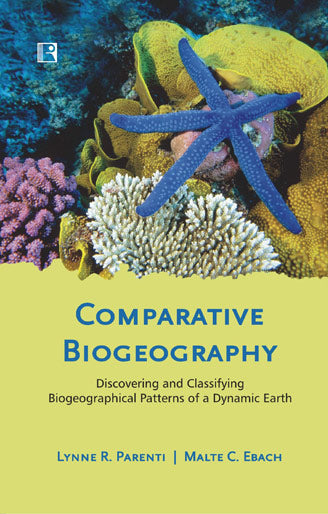Comparative Biogeography: Discovering and Classifying Biogeographical Patterns of a Dynamic Earth
Comparative Biogeography: Discovering and Classifying Biogeographical Patterns of a Dynamic Earth is backordered and will ship as soon as it is back in stock.
Couldn't load pickup availability
Genuine Products Guarantee
Genuine Products Guarantee
We guarantee 100% genuine products, and if proven otherwise, we will compensate you with 10 times the product's cost.
Delivery and Shipping
Delivery and Shipping
Products are generally ready for dispatch within 1 day and typically reach you in 3 to 5 days.
Book Details
-
Author: Lynne R. Parenti, Malte C. Ebach
-
Publisher: Rawat Publications
-
Language: English
-
Edition: 2017
-
ISBN: 9788131608258
-
Pages: 308
-
Cover: Hardcover
-
Dimensions: 9.9 x 6.7 x 1.3 inches
About the Book
Biogeographers seek to unravel the complex history of Earth and its life forms by analyzing patterns of biodiversity, species distribution, and geological history. However, biogeography has often been fragmented, with divergent systematic and evolutionary approaches that lack a unifying research theme or method. In "Comparative Biogeography," Lynne R. Parenti and Malte C. Ebach tackle this issue head-on, offering a comprehensive comparative approach to biogeography that bridges these gaps.
Rooted in phylogenetic systematics, this approach provides an empirical framework for discovering and interpreting the patterns and processes of life distribution on Earth. The authors address biogeography from its foundational principles to its most effective applications, offering real-life examples to illustrate the concepts and challenges. These examples include the first comparative biogeographical analysis of the Indo-West Pacific, an introduction to biogeographical concepts in the context of earth sciences, and the integration of phylogeny, evolution, and earth history.
Divided into three parts—History and Homology, Methods, and Implementation—the book covers essential topics such as endemic areas, biotic areas, biogeographic processes, and the systematic biogeographic method. Furthermore, the authors explore the relationship between geology and comparative biogeography and present an insightful analysis of the biogeography of the Pacific, offering a forward-looking perspective on the future of biogeography.
This book is a must-read for those interested in the intersections of ecology, evolutionary biology, and geology, offering a fresh perspective on how we study the distribution of life across the planet.





